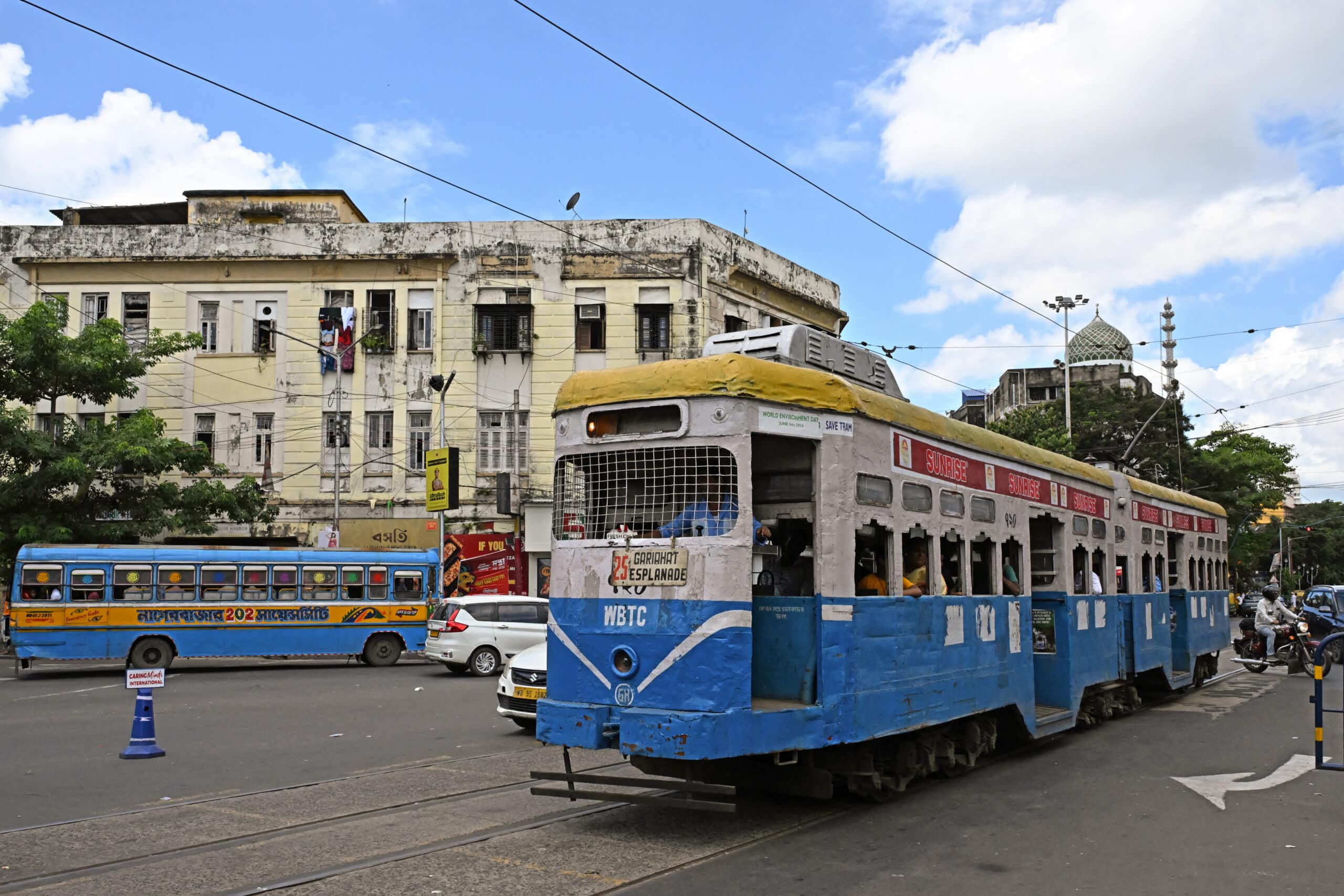Asia’s oldest operating trams see slow death in India

In this photo taken on September 8, 2024, passengers commute in a tram along a street in Kolkata. Agence France-Presse
KOLKATA — The dinging bell of a tram rattling through the streets of the Indian city of Kolkata is all it takes for Deep Das to have the “happiest moment” of his day.
“There were times when there were frequent buses… but I still waited for the trams,” the 18-year-old student said.
But while their fans hail the slow-moving transport system as the “glory” of the megacity and an integral part of how historic Kolkata grew, the 151-year-old network is under threat.
READ: Revival of Manila tram system eyed
A lackadaisical attitude to maintaining the tram system has contributed to its slow decay.
Article continues after this advertisementDas is among a group of enthusiasts called the Calcutta Tram Users’ Association (CTUA) fighting to protect the trams.
Article continues after this advertisementCTUA leader and retired biochemist Debashish Bhattacharyya argues that city authorities risk losing a cheap transport solution with green credentials.
“The investment you require is minimum,” Bhattacharyya said, accusing politicians of ignoring the potential “economic success” of the trams.
READ: Sydney’s new $2.8 billion tram line rolls into problems
“The life of the trams is 50 to 80 years, in contrast to five to 10 years for buses — and their operational running cost is minimum.”
The trams evoke the soul of the city for many, he said.
“This is the only city in India with tramways,” he said.
“If this is removed, then this glory — of not only the city, of the country — will be lost,” he warned.
‘Brave the odds’
Introduced in the sprawling eastern city in 1873 during the early days of the imperial British Raj, trams in Kolkata were initially horse-drawn, then steam-driven.
Electric-powered trams took to the streets in 1900.
The tram now rumbles on the serpentine roads in the city, weaving its way through snarled traffic jams of vintage yellow taxis, trucks, buses, cars and, at times, cattle.
Sometimes tram infrastructure acts as poles for clotheslines, with laundry flapping in the breeze.
The single-story trams — painted in uniform stripes of bright blue and white, with a sunshine-yellow top — trundle along at around 20 kilometres (12 miles) per hour, at best, when they’re not stuck in traffic.
The state’s West Bengal Transport Corporation argues its trams are cheap, safe, produce no noxious fumes and are economical, fitting five times more passengers than a bus, calling them part of the city’s “glorious past, present and our future”.
“Although it is true that their numbers have drastically come down… the Kolkata tram has managed to brave the odds”, it argues.
‘City’s old identity’
Rides are affordable at seven rupees ($0.08), less than a cup of tea on the street and cheaper than the bus.
But since they now run on irregular schedules, many commuters would rather pay more to be on time.
While the tram has fixed tracks, India’s freestyle obedience to traffic rules means anybody and everybody can overtake it.
So the tram has to give way, and the space to maneuver on the streets is zero.
But for many passengers, it is a trip down memory lane.
Teacher Ram Singh, 54, said a ride reminded him of his childhood, when the trams were a core part of the city’s public transport system.
“We used to ride trams, and get off after one or two stops, then we would get on the tram from the other side and get off from that too,” he said laughing.
“That way, we would get our tram rides — and also not have to pay for tickets”.
The trams now only function on two lines in the city, compared to a once-extensive network with scores of routes.
At one site, dozens of railcars stand derelict with rust swallowing their colors, some dating back to the 1940s.
“Cities should develop, but along with it, history should also be preserved”, Singh said, calling the trams the “city’s old identity”.
Das’s group holds community meetings, puts up posters and tries to address the challenges the trams face.
But his role also requires him to monitor breakdowns and electricity issues — something that reminds him starkly that the life of the trams may be coming to an end.
Undeterred, he vows to fight for their future as far as he can.
“I love my trams more than I love myself,” said Das.
“I will do whatever is possible.”